Tips for Effective Public Speaking and Debating Ideas
VerifiedAdded on 2023/06/04
|18
|1052
|465
AI Summary
This presentation provides tips for effective public speaking and debating ideas. It emphasizes the importance of using simple language, engaging storytelling techniques, and open-ended discussions to keep the audience interested. It also highlights the differences between debates and discussions and the need to keep the end goal in mind.
Contribute Materials
Your contribution can guide someone’s learning journey. Share your
documents today.
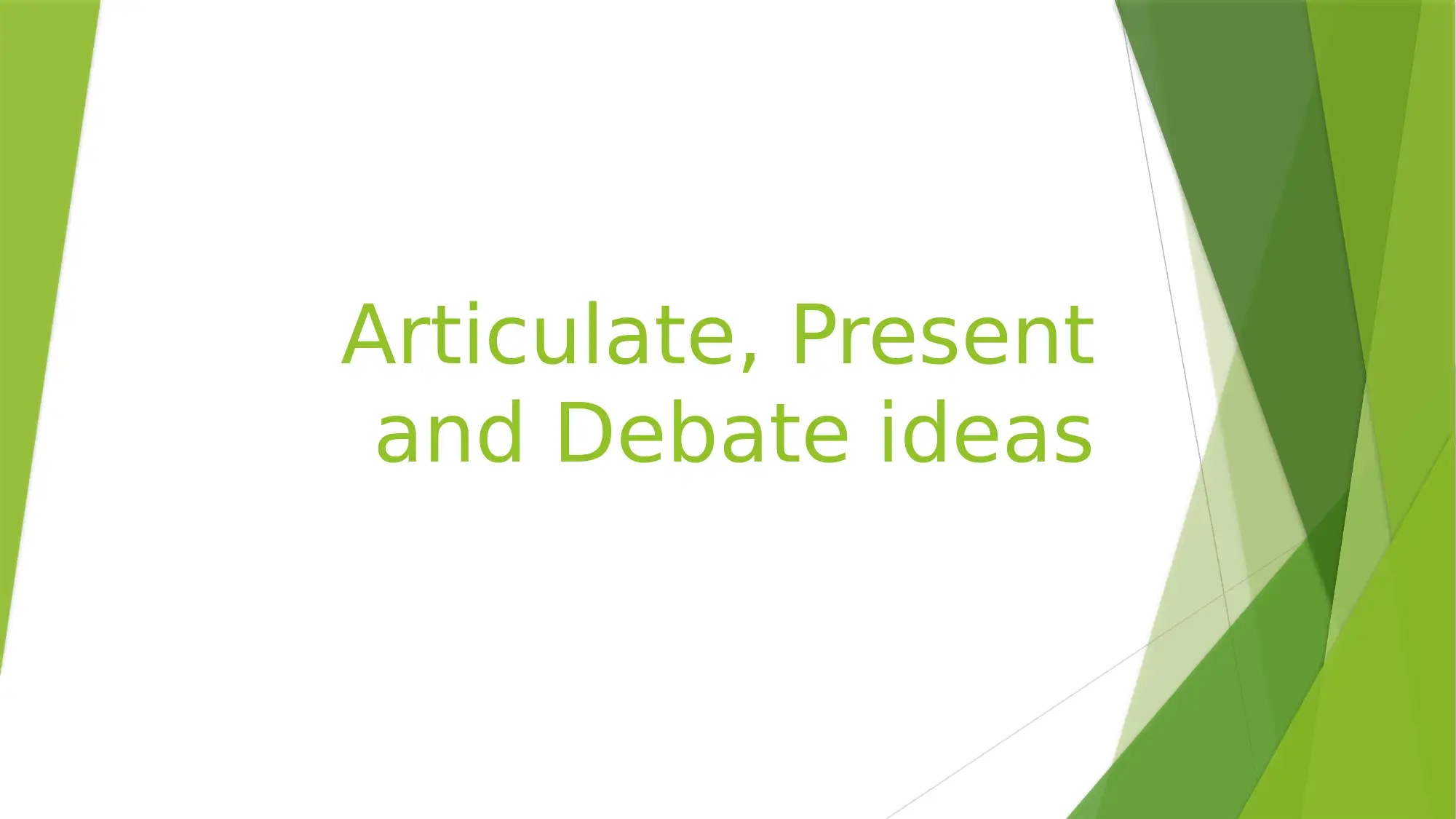
Articulate, Present
and Debate ideas
and Debate ideas
Secure Best Marks with AI Grader
Need help grading? Try our AI Grader for instant feedback on your assignments.
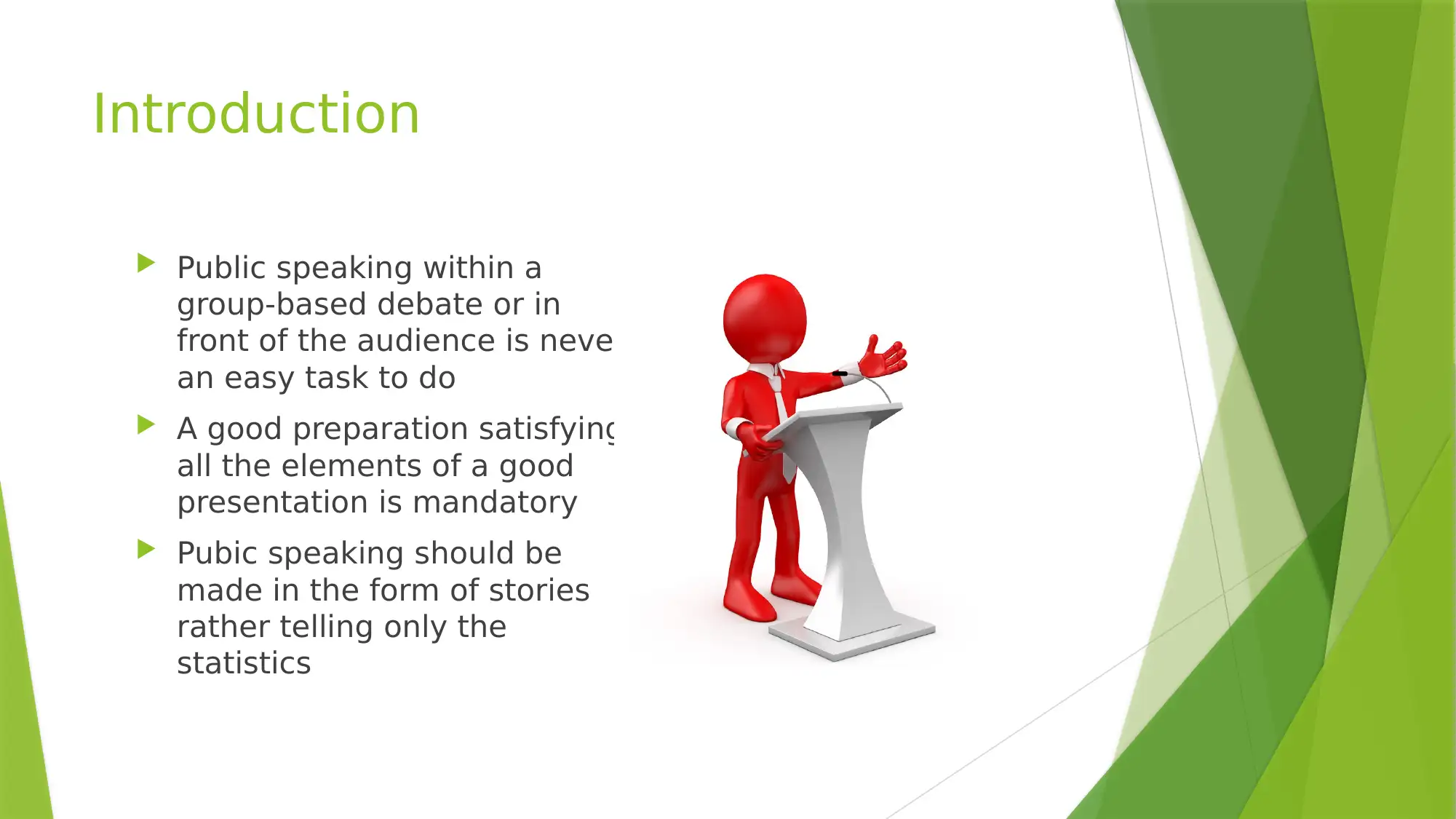
Introduction
Public speaking within a
group-based debate or in
front of the audience is never
an easy task to do
A good preparation satisfying
all the elements of a good
presentation is mandatory
Pubic speaking should be
made in the form of stories
rather telling only the
statistics
Public speaking within a
group-based debate or in
front of the audience is never
an easy task to do
A good preparation satisfying
all the elements of a good
presentation is mandatory
Pubic speaking should be
made in the form of stories
rather telling only the
statistics
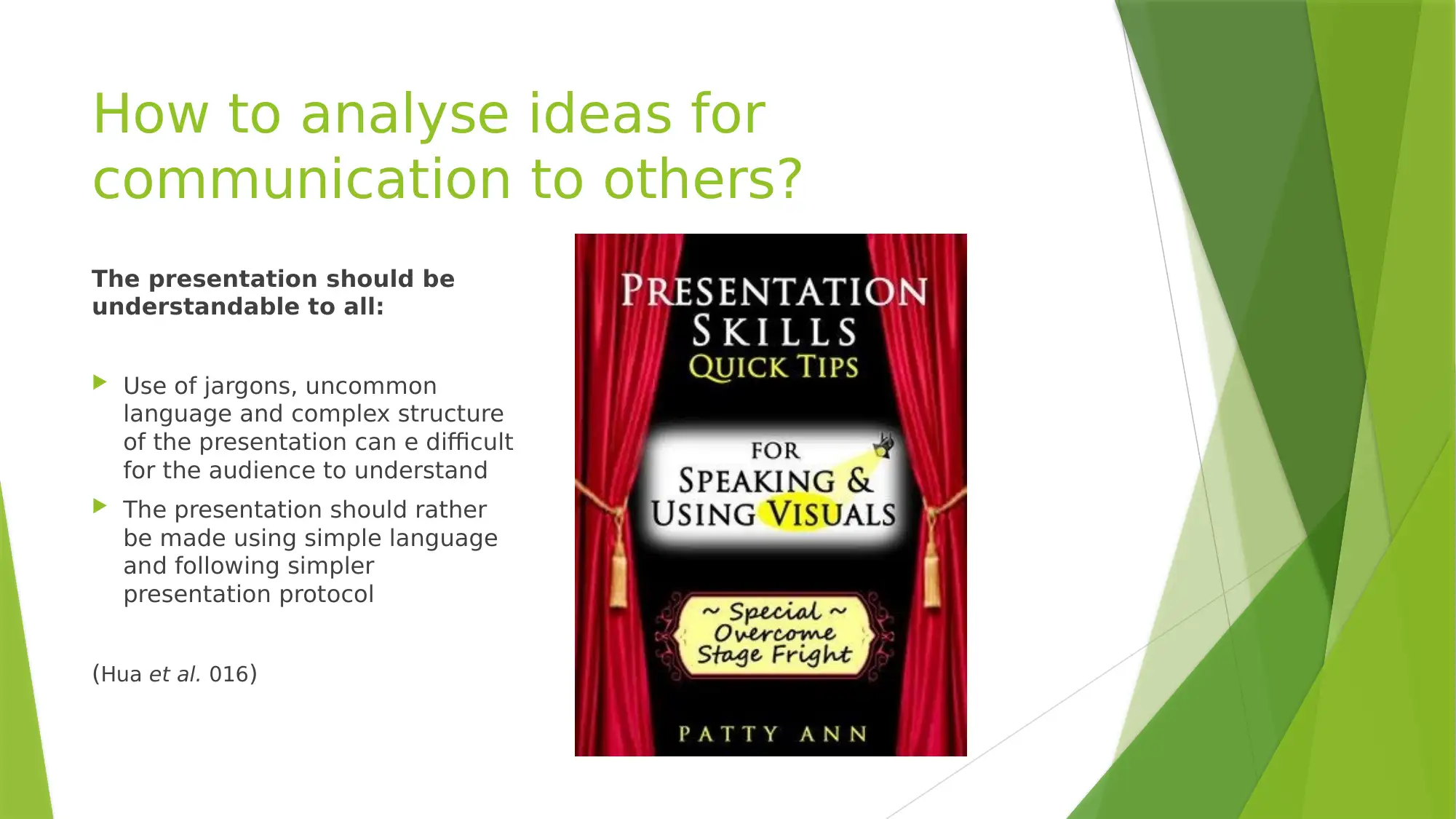
How to analyse ideas for
communication to others?
The presentation should be
understandable to all:
Use of jargons, uncommon
language and complex structure
of the presentation can e difficult
for the audience to understand
The presentation should rather
be made using simple language
and following simpler
presentation protocol
(Hua et al. 016)
communication to others?
The presentation should be
understandable to all:
Use of jargons, uncommon
language and complex structure
of the presentation can e difficult
for the audience to understand
The presentation should rather
be made using simple language
and following simpler
presentation protocol
(Hua et al. 016)
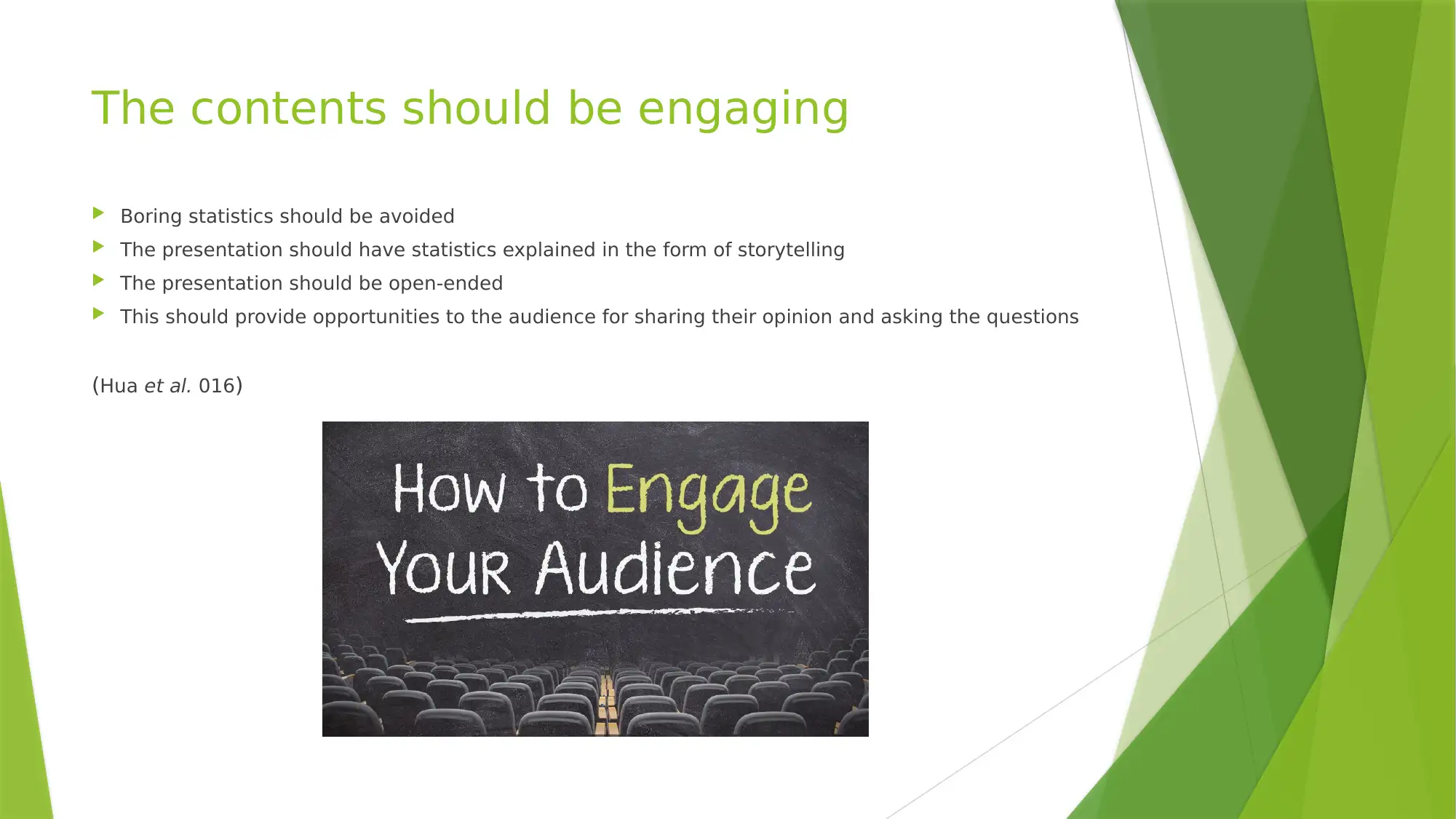
The contents should be engaging
Boring statistics should be avoided
The presentation should have statistics explained in the form of storytelling
The presentation should be open-ended
This should provide opportunities to the audience for sharing their opinion and asking the questions
(Hua et al. 016)
Boring statistics should be avoided
The presentation should have statistics explained in the form of storytelling
The presentation should be open-ended
This should provide opportunities to the audience for sharing their opinion and asking the questions
(Hua et al. 016)
Secure Best Marks with AI Grader
Need help grading? Try our AI Grader for instant feedback on your assignments.
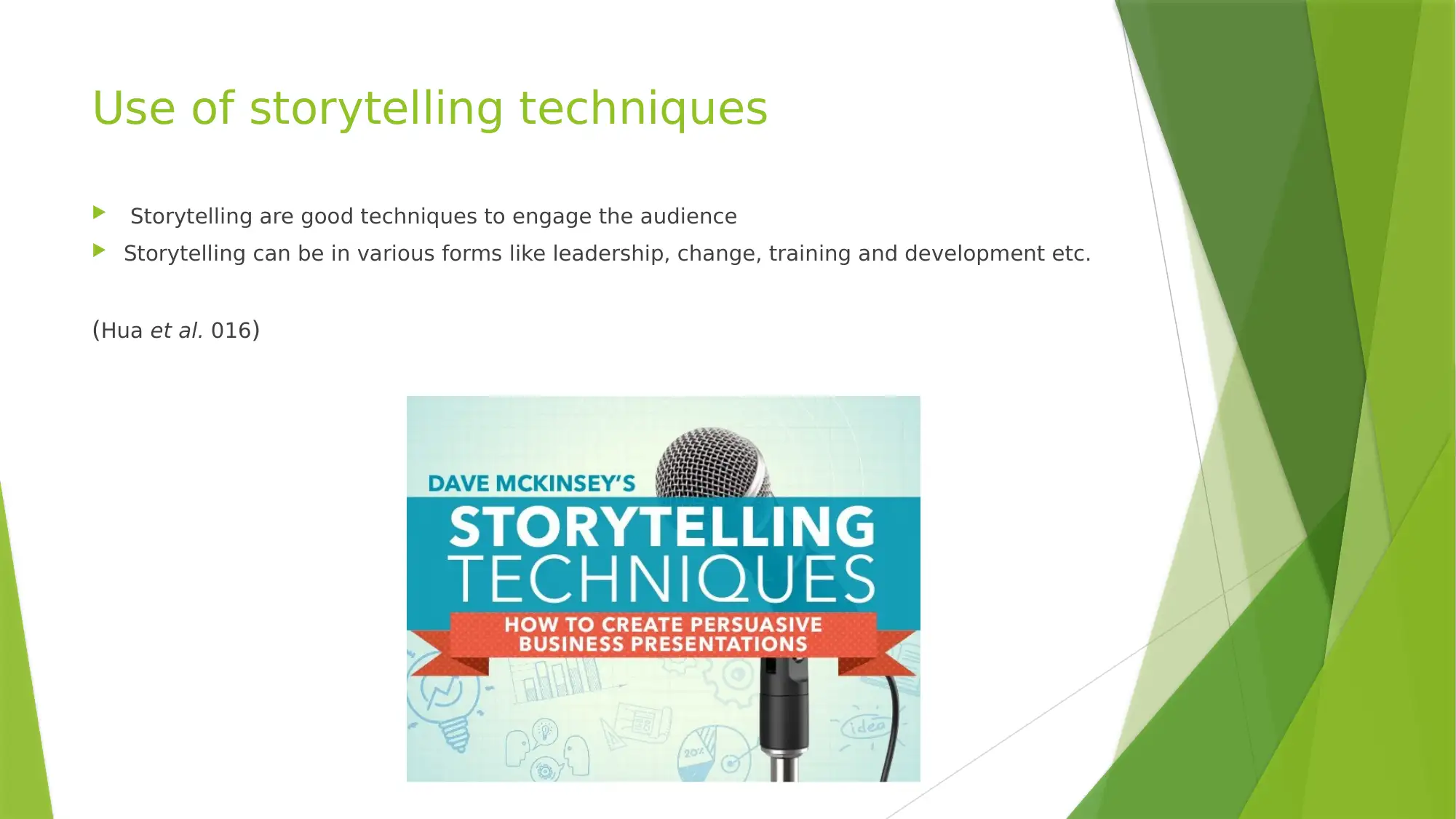
Use of storytelling techniques
Storytelling are good techniques to engage the audience
Storytelling can be in various forms like leadership, change, training and development etc.
(Hua et al. 016)
Storytelling are good techniques to engage the audience
Storytelling can be in various forms like leadership, change, training and development etc.
(Hua et al. 016)
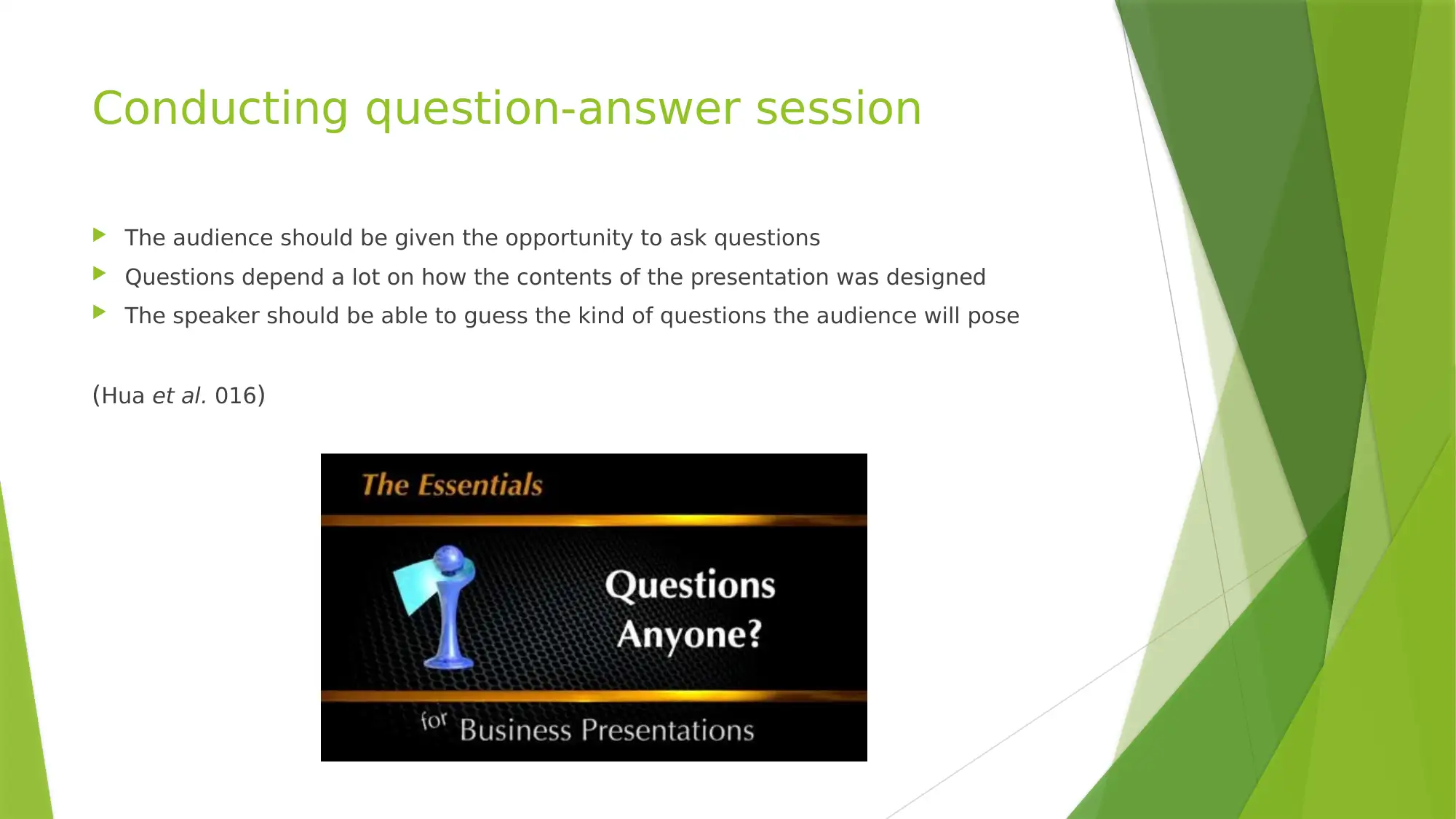
Conducting question-answer session
The audience should be given the opportunity to ask questions
Questions depend a lot on how the contents of the presentation was designed
The speaker should be able to guess the kind of questions the audience will pose
(Hua et al. 016)
The audience should be given the opportunity to ask questions
Questions depend a lot on how the contents of the presentation was designed
The speaker should be able to guess the kind of questions the audience will pose
(Hua et al. 016)
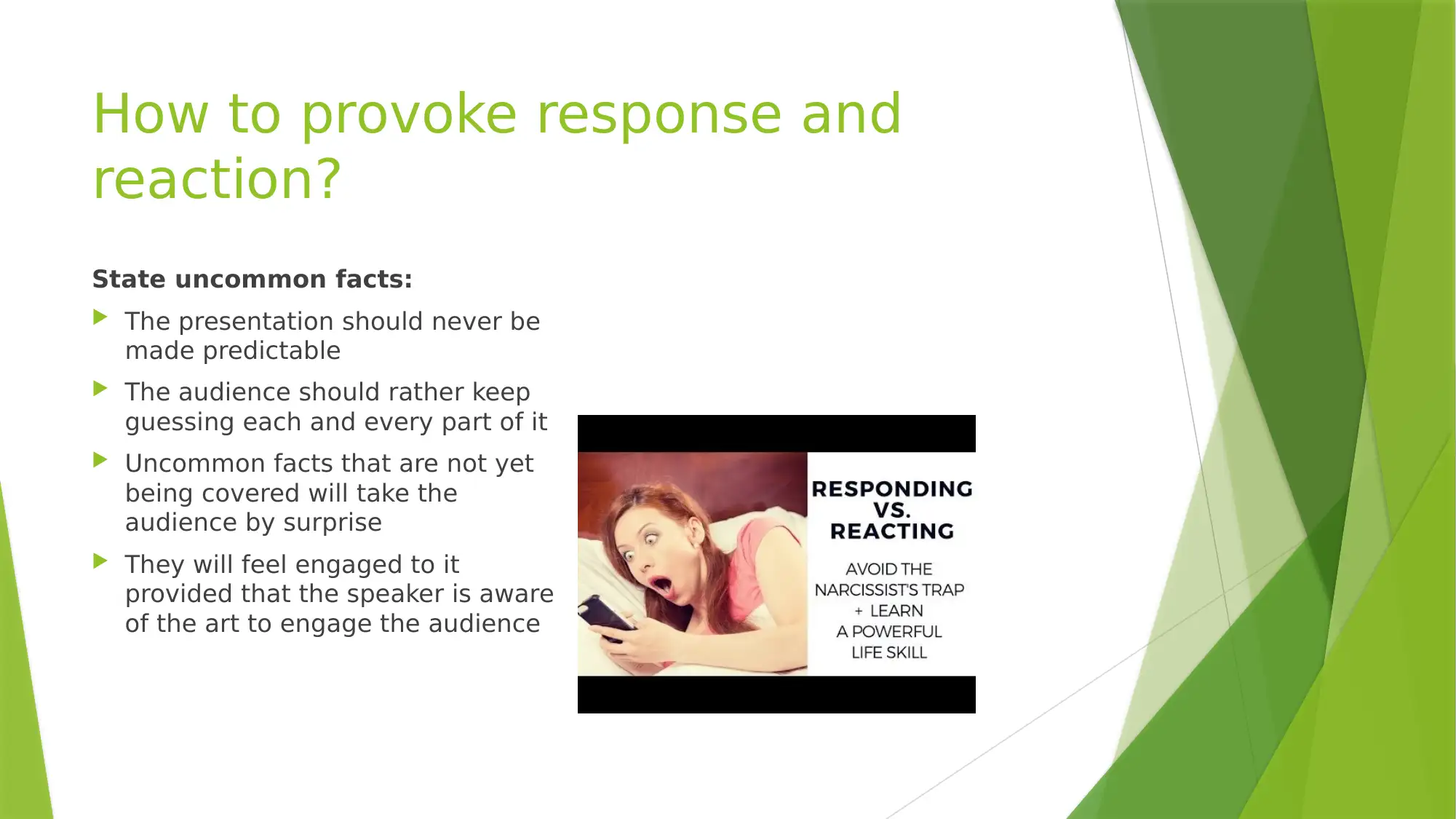
How to provoke response and
reaction?
State uncommon facts:
The presentation should never be
made predictable
The audience should rather keep
guessing each and every part of it
Uncommon facts that are not yet
being covered will take the
audience by surprise
They will feel engaged to it
provided that the speaker is aware
of the art to engage the audience
reaction?
State uncommon facts:
The presentation should never be
made predictable
The audience should rather keep
guessing each and every part of it
Uncommon facts that are not yet
being covered will take the
audience by surprise
They will feel engaged to it
provided that the speaker is aware
of the art to engage the audience
Paraphrase This Document
Need a fresh take? Get an instant paraphrase of this document with our AI Paraphraser
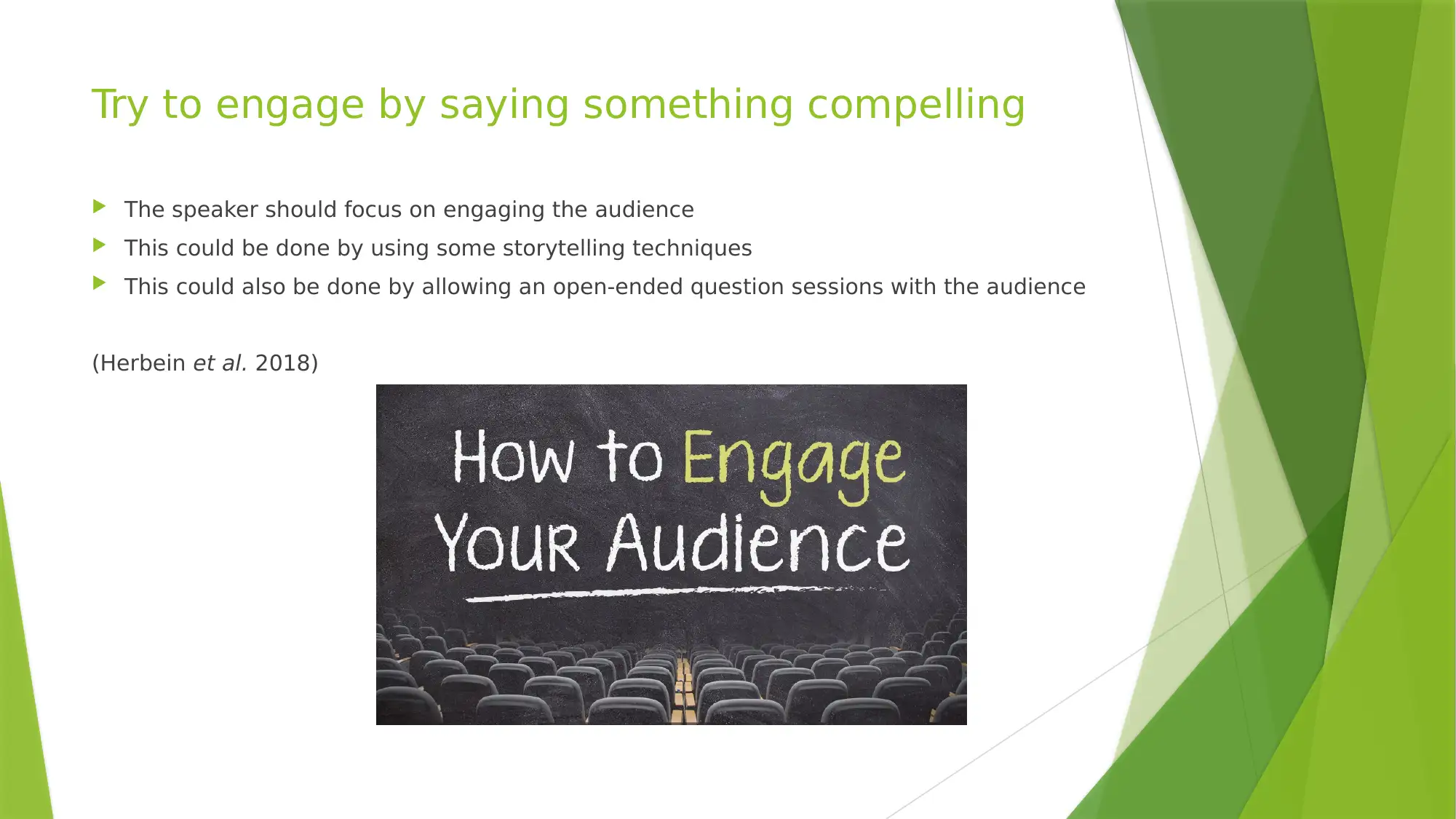
Try to engage by saying something compelling
The speaker should focus on engaging the audience
This could be done by using some storytelling techniques
This could also be done by allowing an open-ended question sessions with the audience
(Herbein et al. 2018)
The speaker should focus on engaging the audience
This could be done by using some storytelling techniques
This could also be done by allowing an open-ended question sessions with the audience
(Herbein et al. 2018)
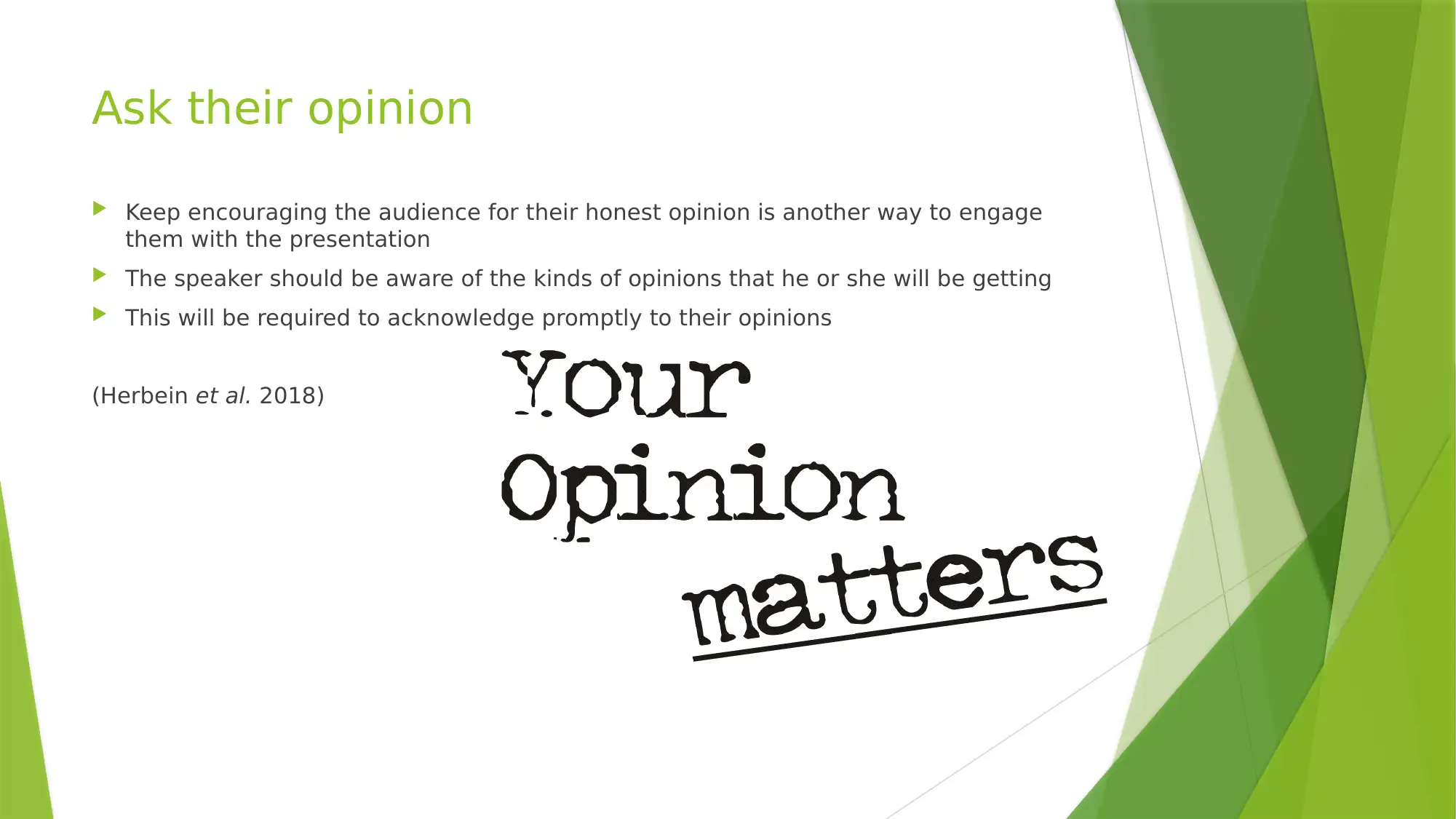
Ask their opinion
Keep encouraging the audience for their honest opinion is another way to engage
them with the presentation
The speaker should be aware of the kinds of opinions that he or she will be getting
This will be required to acknowledge promptly to their opinions
(Herbein et al. 2018)
Keep encouraging the audience for their honest opinion is another way to engage
them with the presentation
The speaker should be aware of the kinds of opinions that he or she will be getting
This will be required to acknowledge promptly to their opinions
(Herbein et al. 2018)
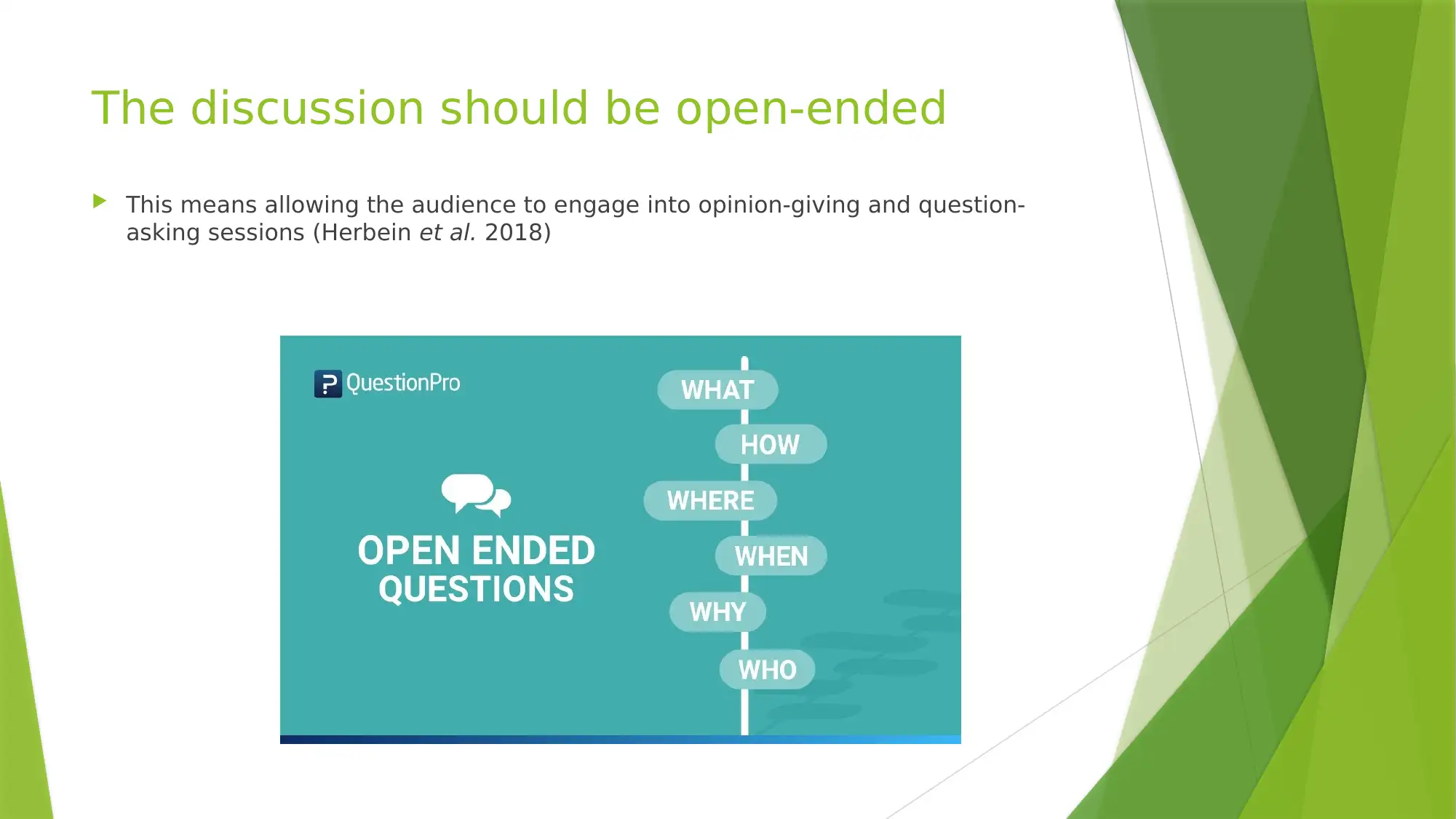
The discussion should be open-ended
This means allowing the audience to engage into opinion-giving and question-
asking sessions (Herbein et al. 2018)
This means allowing the audience to engage into opinion-giving and question-
asking sessions (Herbein et al. 2018)
Secure Best Marks with AI Grader
Need help grading? Try our AI Grader for instant feedback on your assignments.
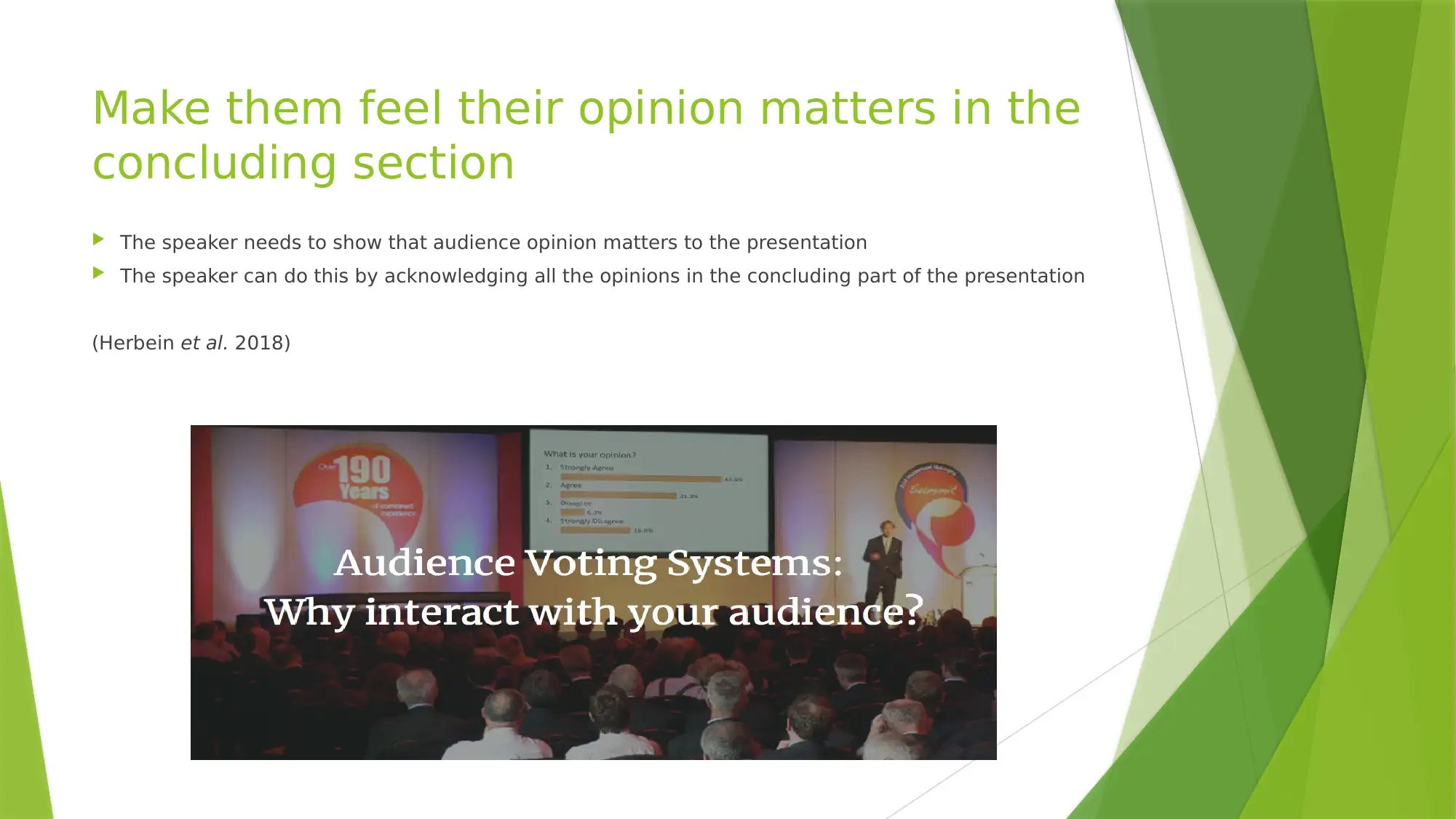
Make them feel their opinion matters in the
concluding section
The speaker needs to show that audience opinion matters to the presentation
The speaker can do this by acknowledging all the opinions in the concluding part of the presentation
(Herbein et al. 2018)
concluding section
The speaker needs to show that audience opinion matters to the presentation
The speaker can do this by acknowledging all the opinions in the concluding part of the presentation
(Herbein et al. 2018)
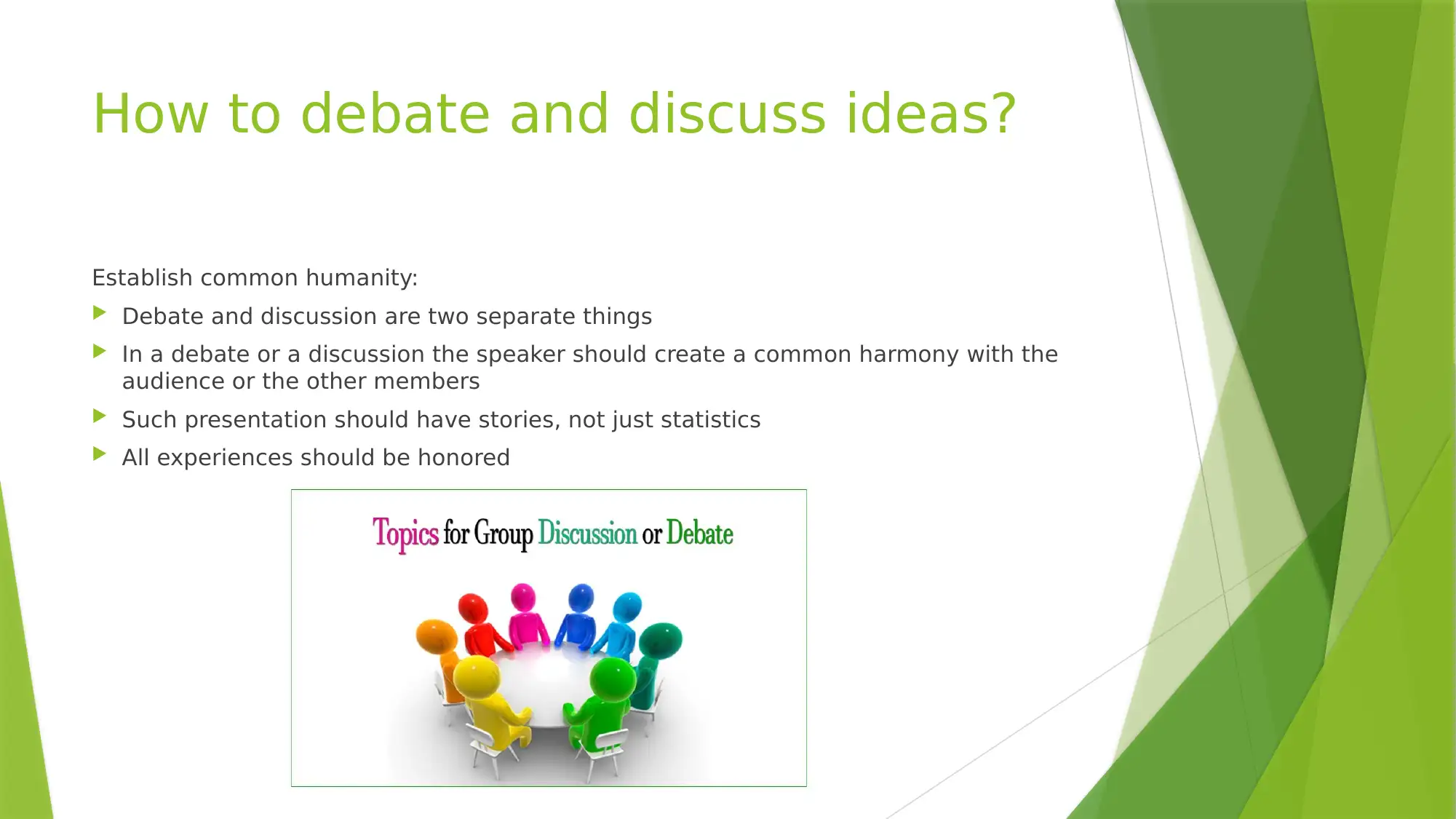
How to debate and discuss ideas?
Establish common humanity:
Debate and discussion are two separate things
In a debate or a discussion the speaker should create a common harmony with the
audience or the other members
Such presentation should have stories, not just statistics
All experiences should be honored
Establish common humanity:
Debate and discussion are two separate things
In a debate or a discussion the speaker should create a common harmony with the
audience or the other members
Such presentation should have stories, not just statistics
All experiences should be honored
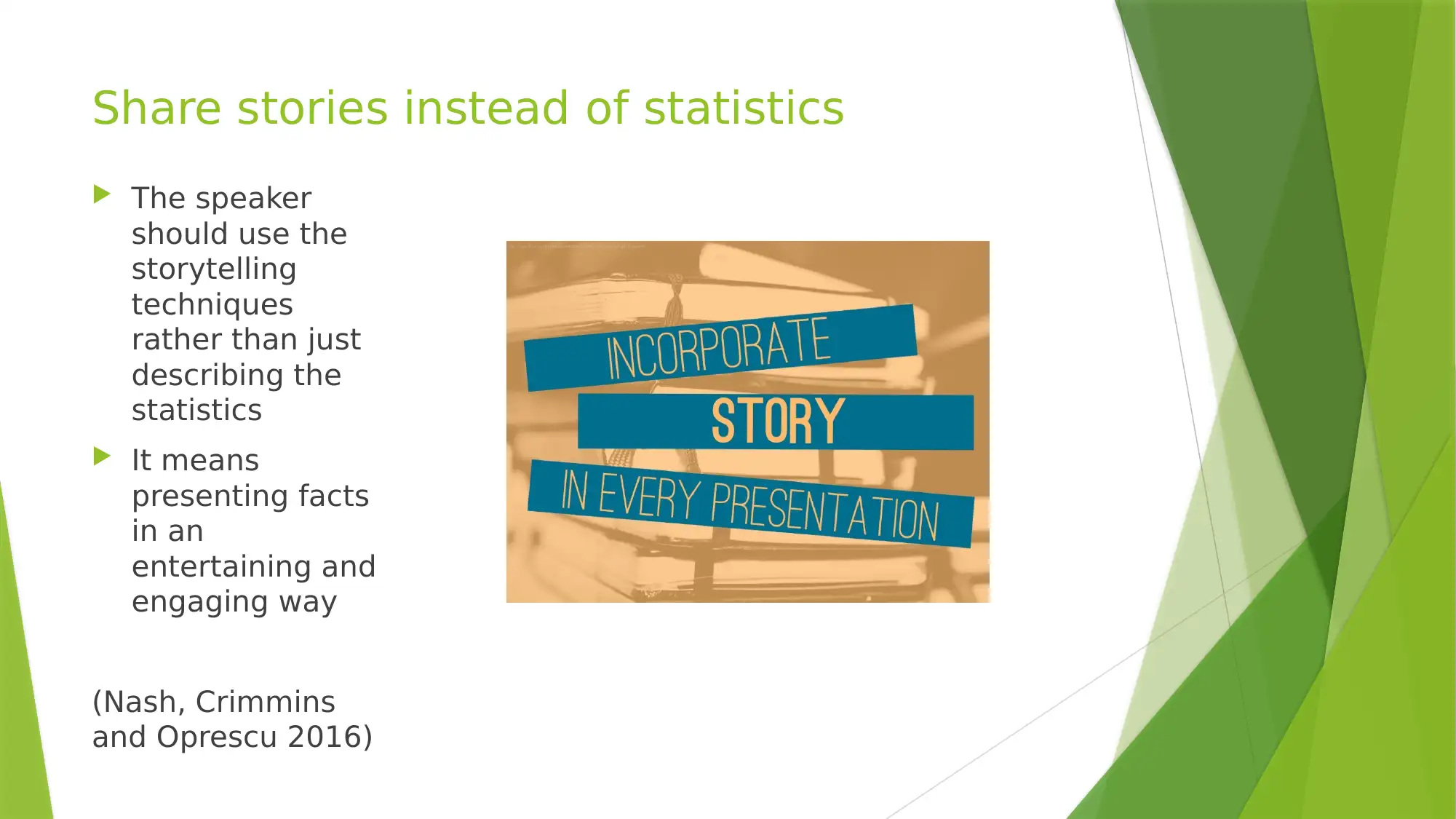
Share stories instead of statistics
The speaker
should use the
storytelling
techniques
rather than just
describing the
statistics
It means
presenting facts
in an
entertaining and
engaging way
(Nash, Crimmins
and Oprescu 2016)
The speaker
should use the
storytelling
techniques
rather than just
describing the
statistics
It means
presenting facts
in an
entertaining and
engaging way
(Nash, Crimmins
and Oprescu 2016)
Paraphrase This Document
Need a fresh take? Get an instant paraphrase of this document with our AI Paraphraser
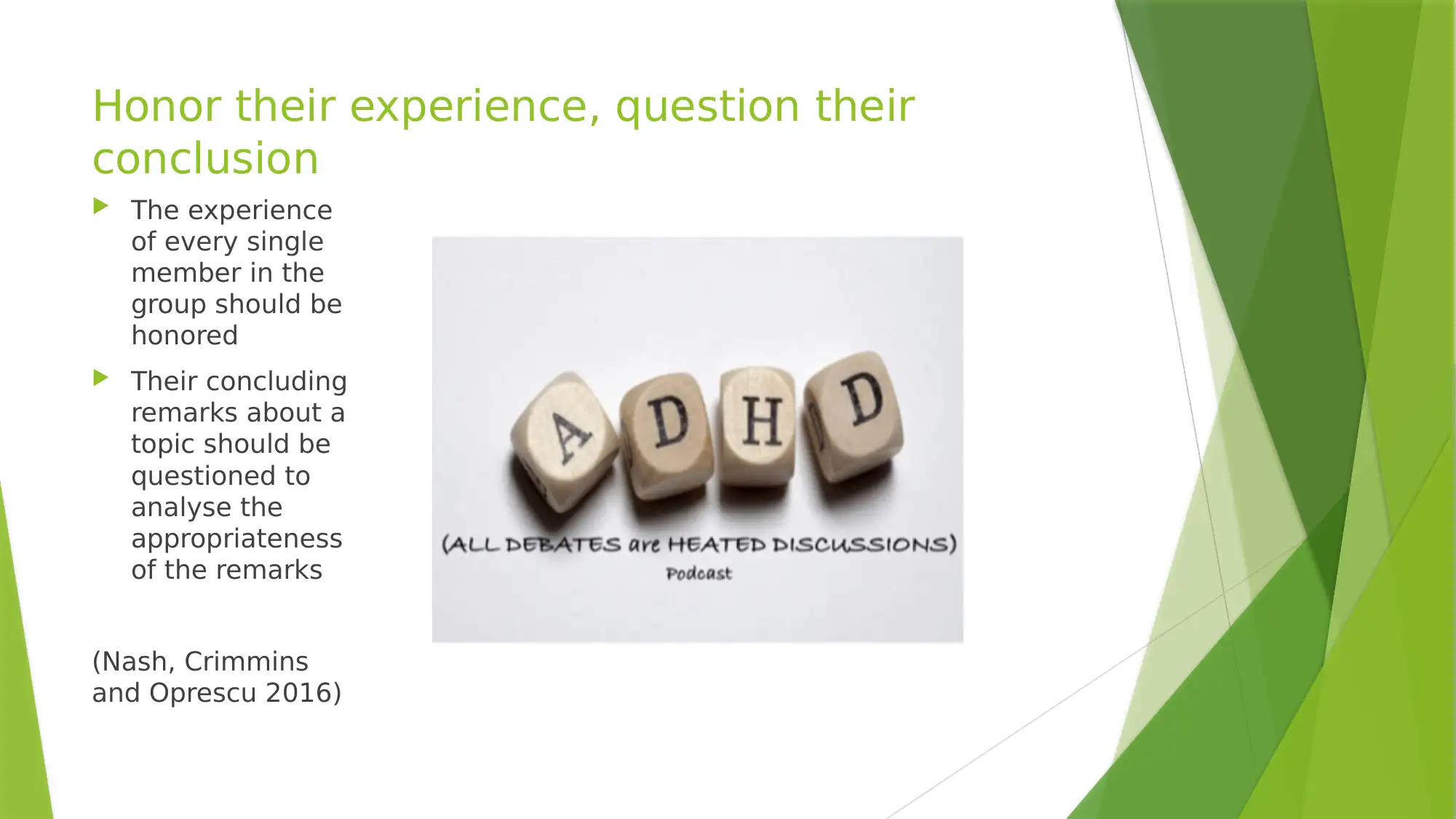
Honor their experience, question their
conclusion
The experience
of every single
member in the
group should be
honored
Their concluding
remarks about a
topic should be
questioned to
analyse the
appropriateness
of the remarks
(Nash, Crimmins
and Oprescu 2016)
conclusion
The experience
of every single
member in the
group should be
honored
Their concluding
remarks about a
topic should be
questioned to
analyse the
appropriateness
of the remarks
(Nash, Crimmins
and Oprescu 2016)
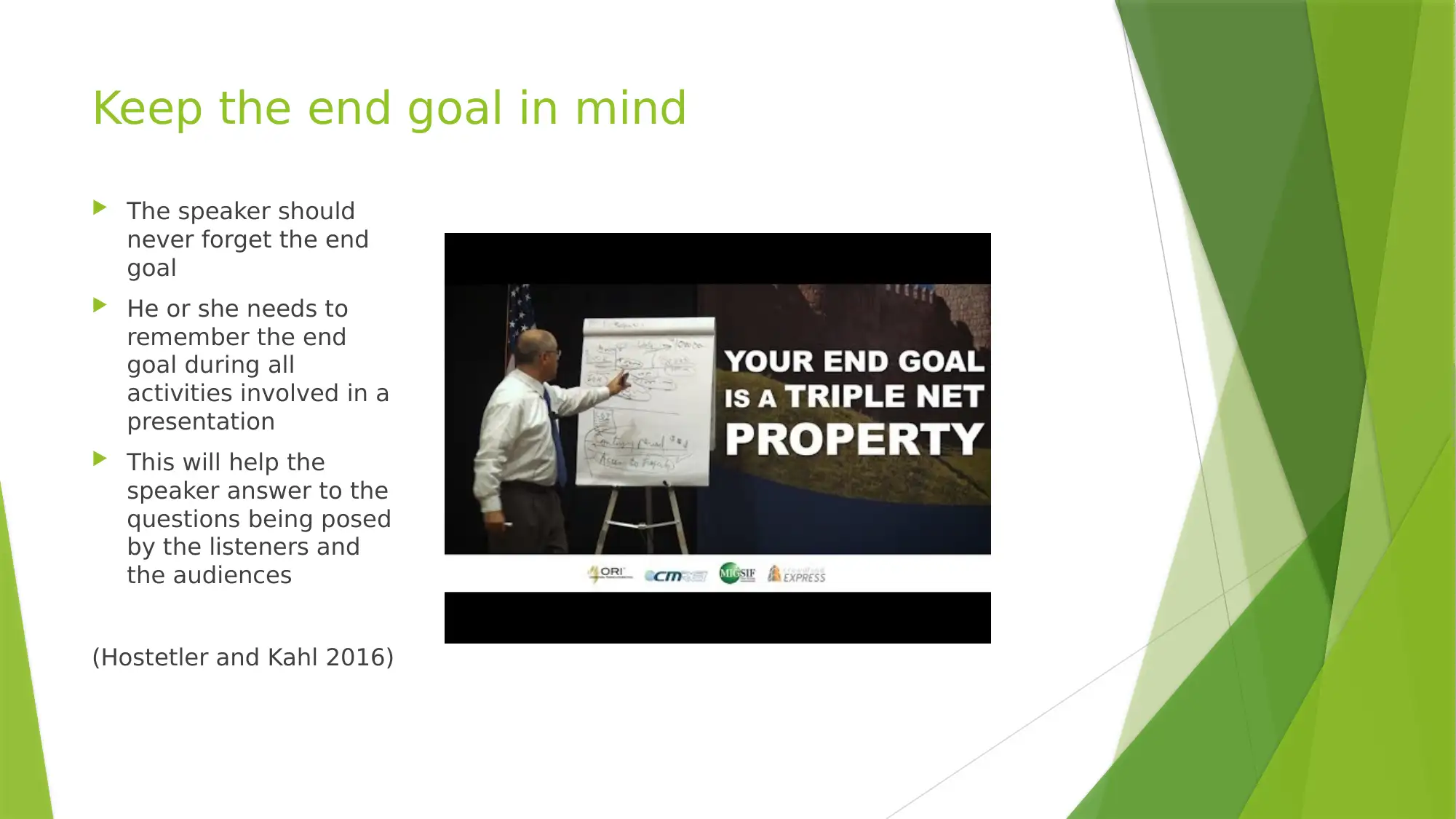
Keep the end goal in mind
The speaker should
never forget the end
goal
He or she needs to
remember the end
goal during all
activities involved in a
presentation
This will help the
speaker answer to the
questions being posed
by the listeners and
the audiences
(Hostetler and Kahl 2016)
The speaker should
never forget the end
goal
He or she needs to
remember the end
goal during all
activities involved in a
presentation
This will help the
speaker answer to the
questions being posed
by the listeners and
the audiences
(Hostetler and Kahl 2016)
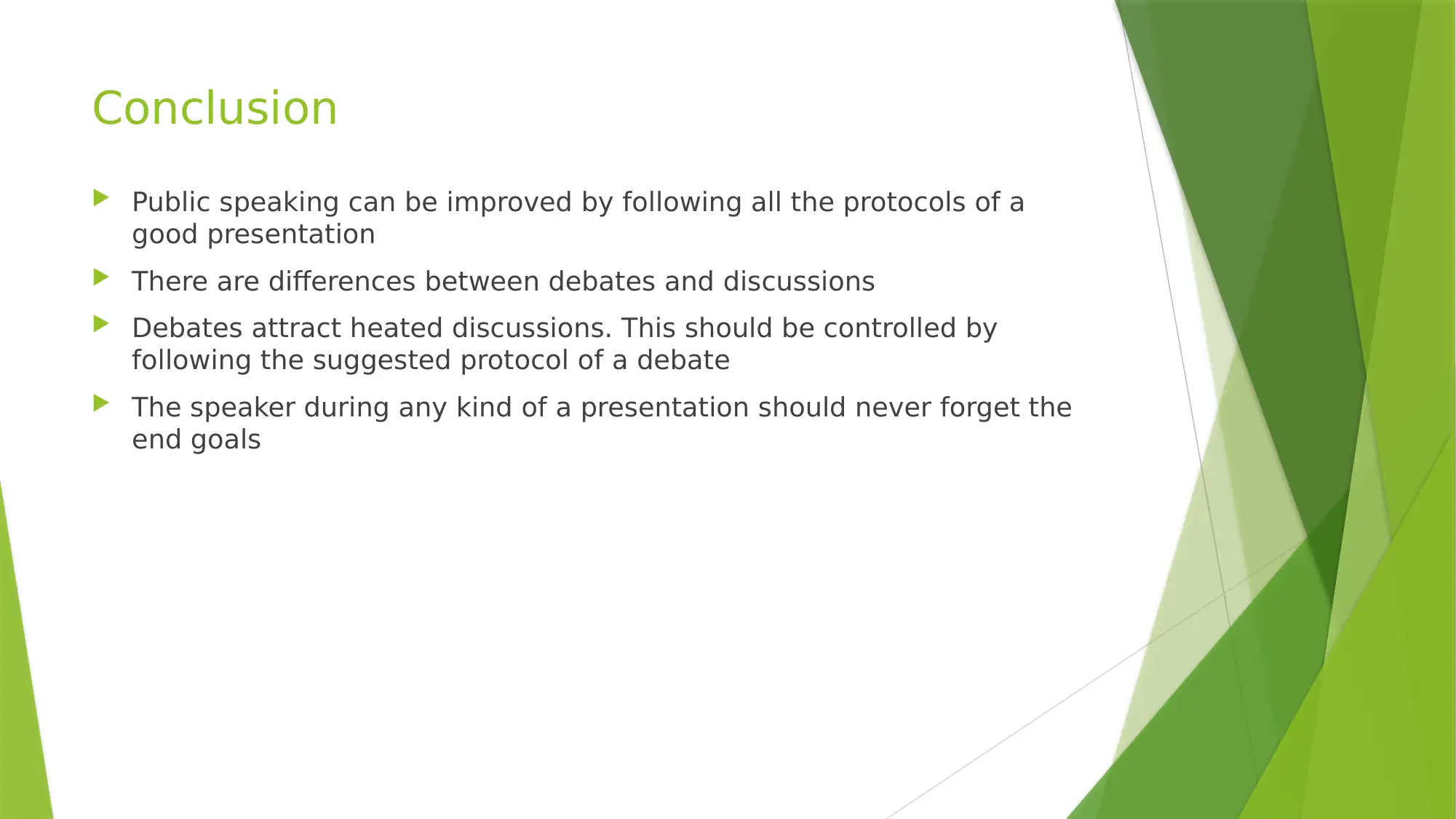
Conclusion
Public speaking can be improved by following all the protocols of a
good presentation
There are differences between debates and discussions
Debates attract heated discussions. This should be controlled by
following the suggested protocol of a debate
The speaker during any kind of a presentation should never forget the
end goals
Public speaking can be improved by following all the protocols of a
good presentation
There are differences between debates and discussions
Debates attract heated discussions. This should be controlled by
following the suggested protocol of a debate
The speaker during any kind of a presentation should never forget the
end goals
Secure Best Marks with AI Grader
Need help grading? Try our AI Grader for instant feedback on your assignments.
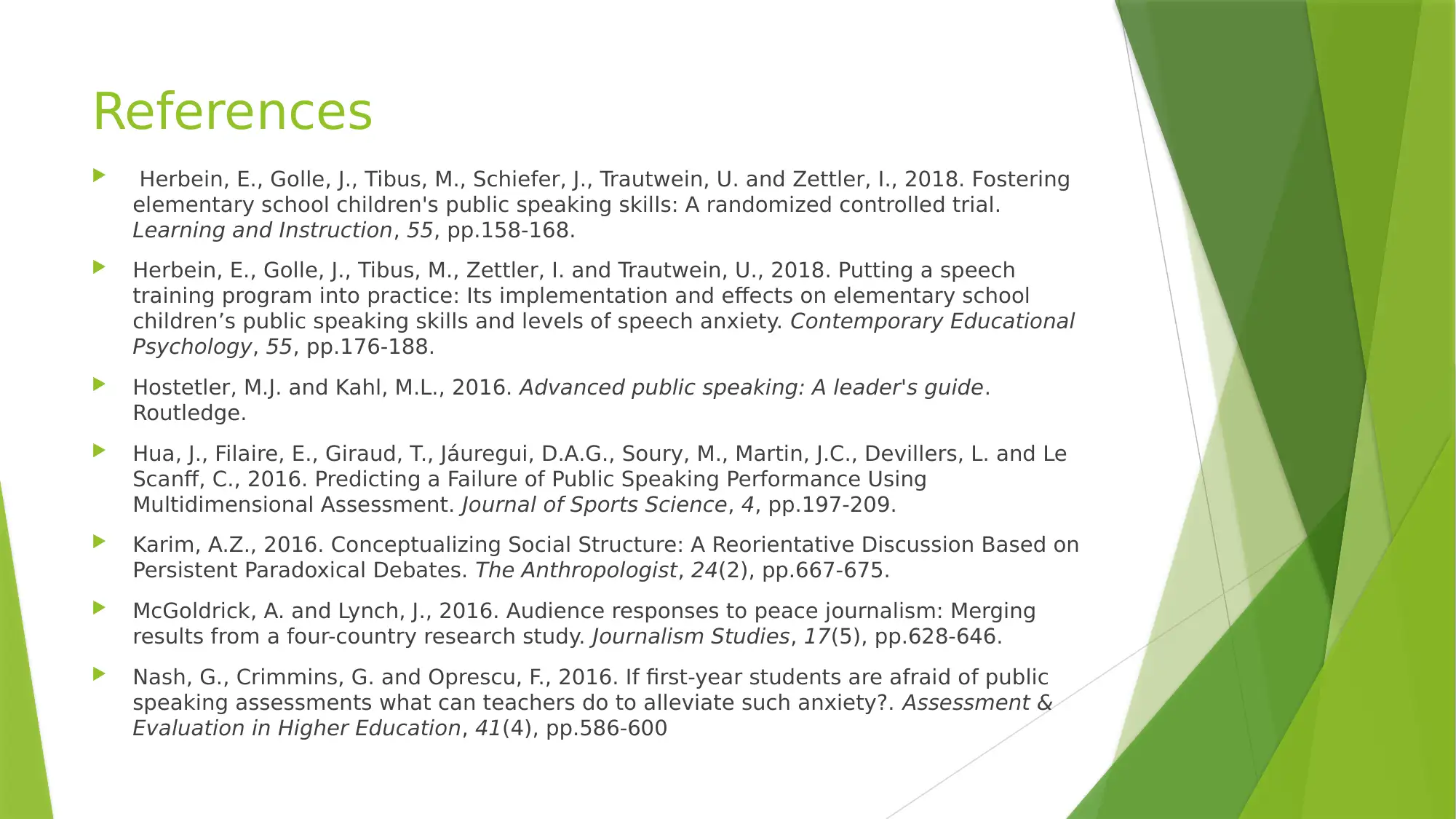
References
Herbein, E., Golle, J., Tibus, M., Schiefer, J., Trautwein, U. and Zettler, I., 2018. Fostering
elementary school children's public speaking skills: A randomized controlled trial.
Learning and Instruction, 55, pp.158-168.
Herbein, E., Golle, J., Tibus, M., Zettler, I. and Trautwein, U., 2018. Putting a speech
training program into practice: Its implementation and effects on elementary school
children’s public speaking skills and levels of speech anxiety. Contemporary Educational
Psychology, 55, pp.176-188.
Hostetler, M.J. and Kahl, M.L., 2016. Advanced public speaking: A leader's guide.
Routledge.
Hua, J., Filaire, E., Giraud, T., Jáuregui, D.A.G., Soury, M., Martin, J.C., Devillers, L. and Le
Scanff, C., 2016. Predicting a Failure of Public Speaking Performance Using
Multidimensional Assessment. Journal of Sports Science, 4, pp.197-209.
Karim, A.Z., 2016. Conceptualizing Social Structure: A Reorientative Discussion Based on
Persistent Paradoxical Debates. The Anthropologist, 24(2), pp.667-675.
McGoldrick, A. and Lynch, J., 2016. Audience responses to peace journalism: Merging
results from a four-country research study. Journalism Studies, 17(5), pp.628-646.
Nash, G., Crimmins, G. and Oprescu, F., 2016. If first-year students are afraid of public
speaking assessments what can teachers do to alleviate such anxiety?. Assessment &
Evaluation in Higher Education, 41(4), pp.586-600
Herbein, E., Golle, J., Tibus, M., Schiefer, J., Trautwein, U. and Zettler, I., 2018. Fostering
elementary school children's public speaking skills: A randomized controlled trial.
Learning and Instruction, 55, pp.158-168.
Herbein, E., Golle, J., Tibus, M., Zettler, I. and Trautwein, U., 2018. Putting a speech
training program into practice: Its implementation and effects on elementary school
children’s public speaking skills and levels of speech anxiety. Contemporary Educational
Psychology, 55, pp.176-188.
Hostetler, M.J. and Kahl, M.L., 2016. Advanced public speaking: A leader's guide.
Routledge.
Hua, J., Filaire, E., Giraud, T., Jáuregui, D.A.G., Soury, M., Martin, J.C., Devillers, L. and Le
Scanff, C., 2016. Predicting a Failure of Public Speaking Performance Using
Multidimensional Assessment. Journal of Sports Science, 4, pp.197-209.
Karim, A.Z., 2016. Conceptualizing Social Structure: A Reorientative Discussion Based on
Persistent Paradoxical Debates. The Anthropologist, 24(2), pp.667-675.
McGoldrick, A. and Lynch, J., 2016. Audience responses to peace journalism: Merging
results from a four-country research study. Journalism Studies, 17(5), pp.628-646.
Nash, G., Crimmins, G. and Oprescu, F., 2016. If first-year students are afraid of public
speaking assessments what can teachers do to alleviate such anxiety?. Assessment &
Evaluation in Higher Education, 41(4), pp.586-600

1 out of 18
Your All-in-One AI-Powered Toolkit for Academic Success.
+13062052269
info@desklib.com
Available 24*7 on WhatsApp / Email
![[object Object]](/_next/static/media/star-bottom.7253800d.svg)
Unlock your academic potential
© 2024 | Zucol Services PVT LTD | All rights reserved.

